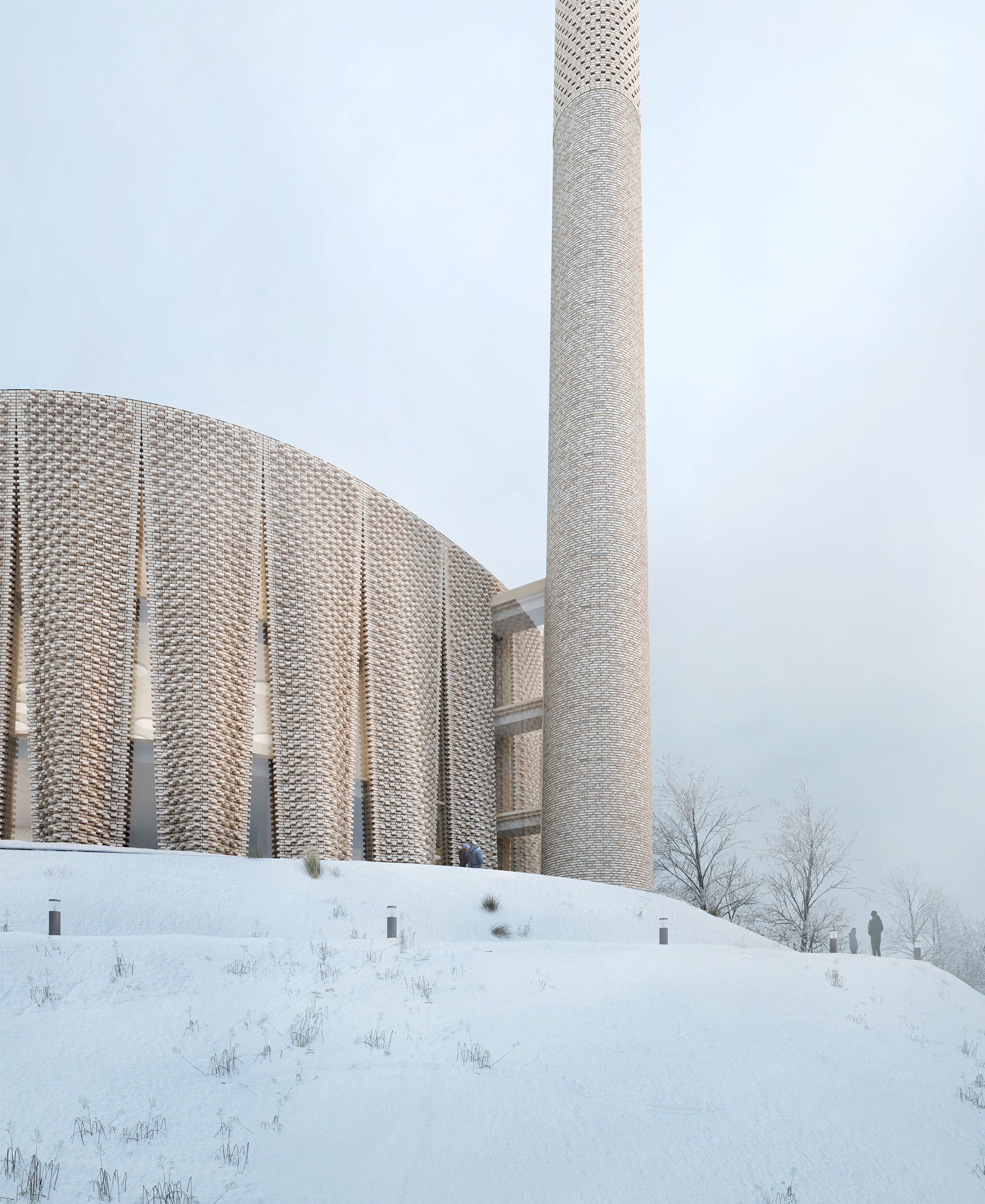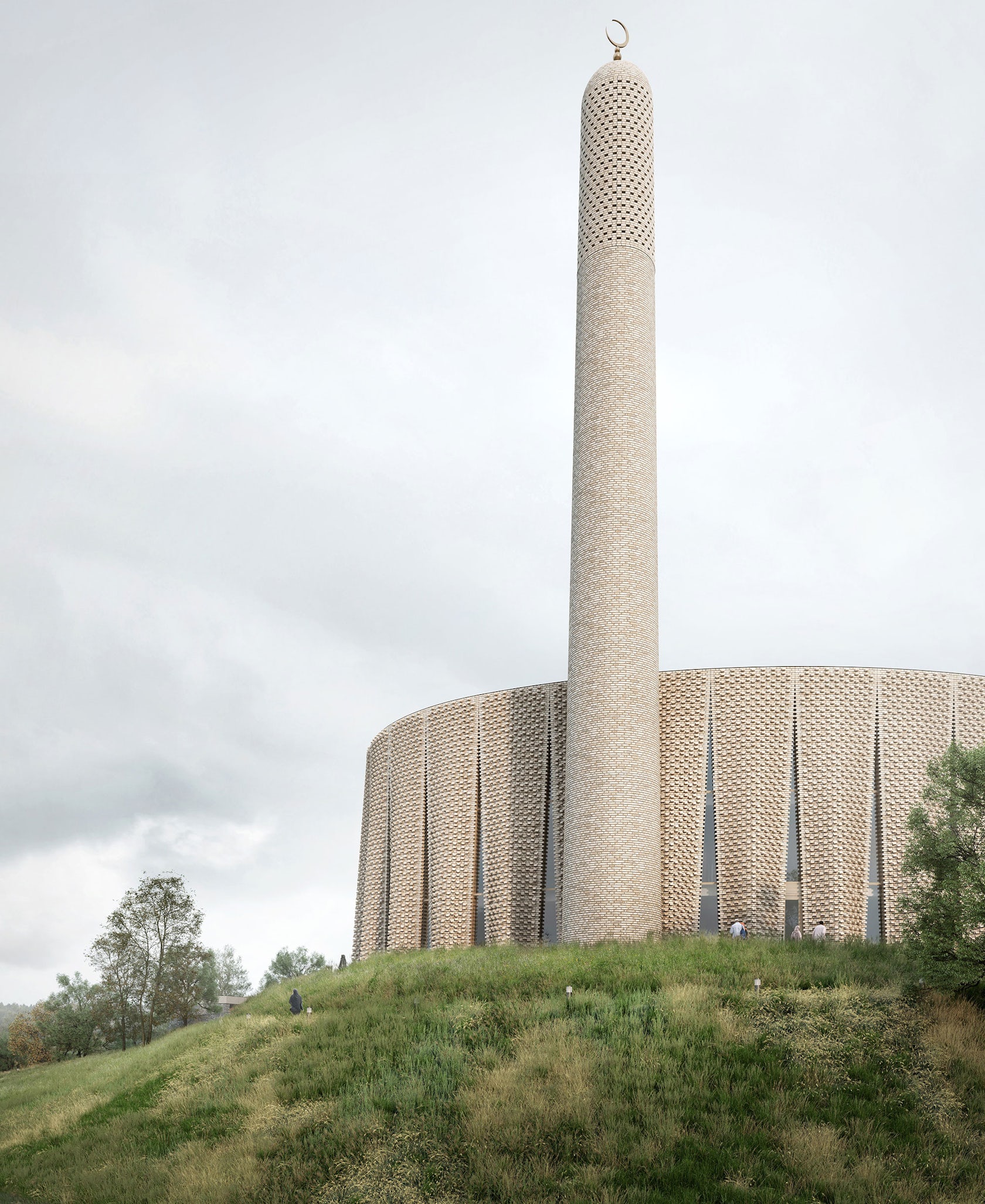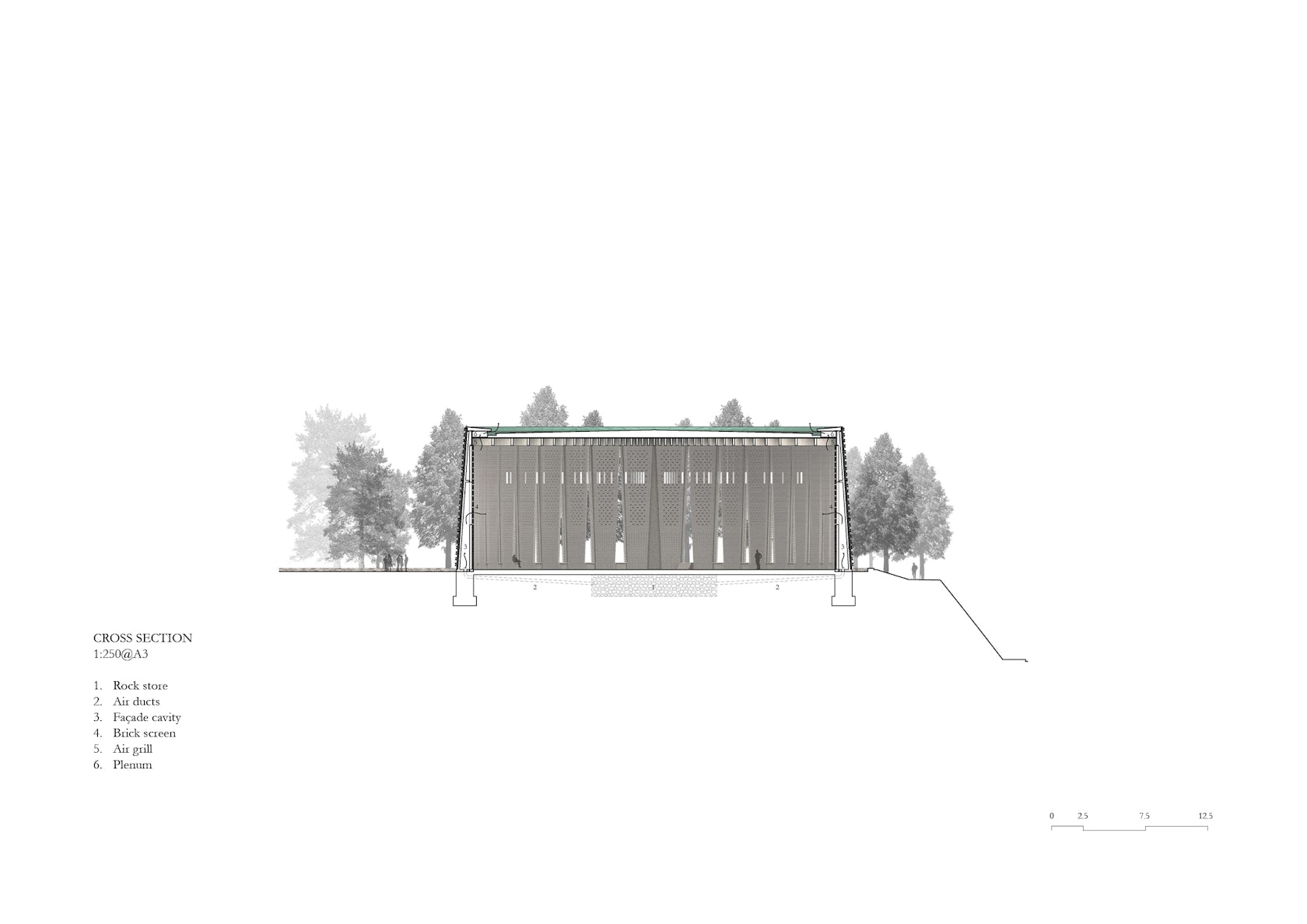BRICK VEIL – The competition sought concepts for a new Mosque in Preston, conceived as a timeless landmark that will stand proudly in the skyline for years to come. In response to the brief, LUCA POIAN FORMS envisioned a building that by virtue of its scale, form, and materiality will be executed as a highly refined structure that celebrates Islamic tradition whilst also paying homage to British craft.
Architizer chatted with Luca Poian, Director at LUCA POIAN FORMS, to learn more about this project.
Architizer: What inspired the initial concept for your design?
Luca Poian: The form and design of the building is a contemporary interpretation of the classic cotton mill. One of its most notable features is its highly textured brick facade, which is conceived as an urban-scale curtain that gently pleats away to frame the main entrance of the building. Inspired by the veil-like qualities of traditional Mashrabiyas, the façade unfolds in both plan and section, orchestrating a delicate interplay of light and shadow whilst also drawing from the morphology of traditional Islamic tents. By virtue of its pleating geometry, the facade has inherent structural stiffness that allows it to exist as an independent system whilst endowing the building with a rich tectonic language.

© LUCA POIAN FORMS
What do you believe is the most unique or ‘standout’ component of the project?
In addition to the pleated brick façade, the mosque’s minaret tower is quite a unique feature. Its geometry makes a symbolic reference to Lancashire’s well-recognised cotton mill chimneys, celebrating local history whilst announcing the building’s presence in the skyline.

© LUCA POIAN FORMS
What was the greatest design challenge you faced during the project, and how did you navigate it?
An understanding of context was absolutely essential to the design process—not only the physical surroundings, but also the social, cultural and historical landscapes surrounding the site. The challenge was to develop an architectural expression that carefully balanced the archetypal elements of a mosque against the need for a contextual formal approach and tectonic language. In this sense, the project was full of individual challenges. For instance, how does one re-think the materiality and geometry of a minaret to reference the architectural tradition of a city in northern England? And, most importantly, how does one unshackle the idea of a mosque from the architectural diagram that has traditionally defined it throughout history, whilst still retaining its spatial qualities and functional aspects?

© LUCA POIAN FORMS
What drove the selection of materials used in the project?
Brick is a highly textural material that offers a unique tectonic richness that keeps with British architectural tradition. In this particular case, however, there was also a narrative element to it. Lancashire is historically known for its brick cotton mills, which balanced the need for functional efficiency and architectural character—an aspect that, in many ways, inspired our design for the mosque.
In our design, the materiality and careful treatment of the building’s exterior not only harmonises the relationship between the new and the existing, but in fact further enhances the building’s cultural identity by harkening back to the textile manufacturing industry that has characterised the region throughout history.

© LUCA POIAN FORMS
How important was sustainability as a design criteria as you worked on this project?
As a practice, sustainability is at the core of our ethos. Throughout the design process, we identified opportunities for increased efficiencies that will help us maximise environmental comfort, lower energy consumption, and reduce our carbon footprint.
With intermittent periods of increased occupancy we have developed a hybrid ventilation strategy using the floor void formed by the natural topology of the site. Air is drawn though a rock store to benefit from the thermal mass provided thereby tempering the air in summer and warming it in winter.
The innovative structural solution to the façade will incorporate a means of distributing this tempered air to the space. During periods of high occupancy the air supply will be mechanically driven however for the majority of the time the process will be natural.

© LUCA POIAN FORMS
In what ways did you collaborate with others, and how did that add value to the project?
We’re cognisant that delivering a building is not a one-man job, and requires close collaboration with robust multidisciplinary teams who are not only willing to embrace our architectural concepts, but also help us improve on them. This project was no exception. We are extremely lucky to be collaborating with Price and Myers, who have been instrumental in developing a structural approach for the project in keeping with the project’s architectural goals. Skelly and Couch have also been invaluable team players and have helped us craft and refine an M&E strategy in line with users’ needs and the project’s long-term sustainability goals. As the project continues into the next stages, we are looking forward crafting other close partnerships that will allow us to deliver on this architectural vision whilst also ensuring we meet our Client’s budget and timetables.

© LUCA POIAN FORMS
How do you believe this project represents you or your firm as a whole?
Working on projects that will have a profound community impact is at the core of our ethos, as well as delivering uniquely iconic architecture that will stand the test of time. This competition was a truly unique opportunity to achieve both goals hand-in-hand.
Team Members
Luca Poian, Mohammed Rahmany, Luciano Preci
Consultants
Structural Engineer: Price & Myers. Service Engineer: Skelly & Couch. Quantity Surveyor: Bristow. Consulting Planning Consultant: Cassidy & Ashton
For more on Brick Veil, please visit the in-depth project page on Architizer.







 BRICK VEIL
BRICK VEIL 


